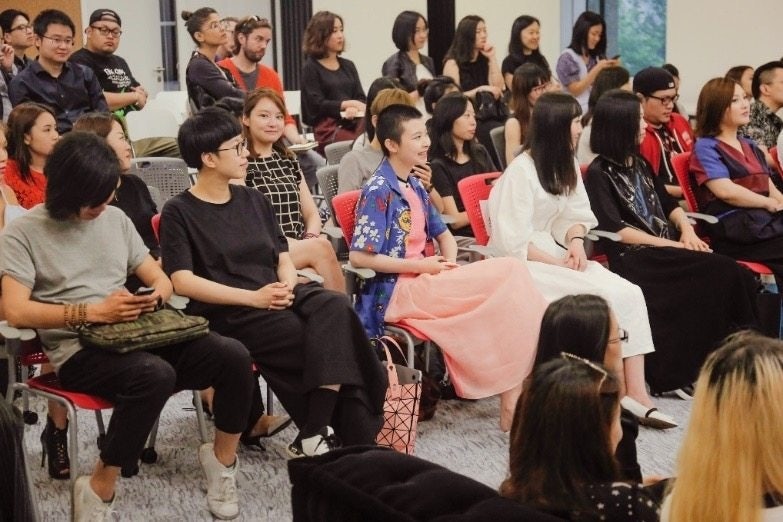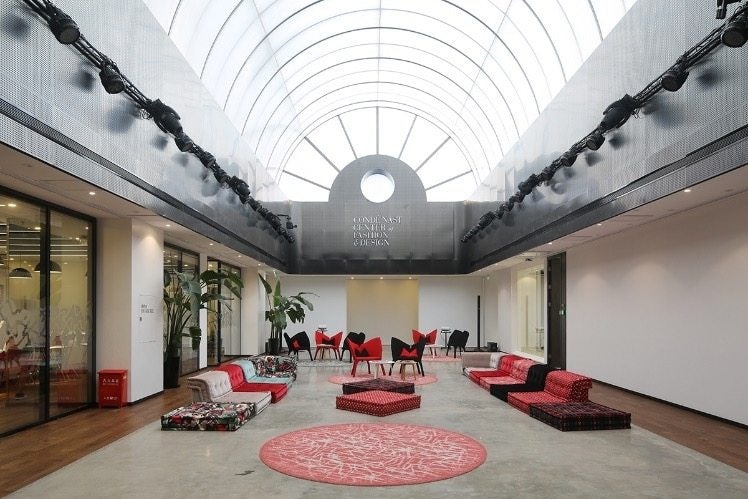As Vogue publisher Condé Nast expands beyond its traditional magazine business into the world of fashion and design education, China is front and center in its global business plan.
The publisher’s Condé Nast Center of Fashion & Design started classes at its newly opened Shanghai location last fall, marking the school’s second global location after it opened in London three years ago. Offering a range of one-day to nine-month courses that are available either full-time, on weekends, or after work, the school is focused on teaching through “active learning" that gives students real-world experience for the workplace.
Courses cover a range of topics that are tuned in to the technology that plays such a crucial role in China's fashion industry. In addition to classes on topics such as photography, styling, marketing, illustration, business, and fashion design, it also offers unique courses particularly tuned into China’s digital fashion world, such as its “How to be a KOL” class offered this summer.
Located in Shanghai’s Huaihai Road luxury shopping area, the Center taps into Condé Nast’s vast fashion world network to host not only classes, but events such as fashion shows, talks, conferences, and exhibitions that allow students direct access to both Chinese and international fashion world elites.
In order to learn more about what the Shanghai center has been up to in its first year, we caught up with its executive director Dominque Simard for an interview ahead of his presentation at the September 23 Shanghai Fashion Web conference in Shanghai organized by digital firm Velvet Group.

The center has been open for 10 months now—has anything surprised you about operating a fashion school in China?#
Since our team is essentially made of professionals with previous experience in running education business instead of media, which is the core of Condé Nast activities, we were well prepared. But for whoever who launches a new business, there are always some surprises along the way. For example, we quickly realized that we would become more like a platform than “just” a school. Not only do we offer courses for individuals and industry training as planned, but we also provide rewards for VIPs like personal styling sessions or a chance to discover fine jewelry or perfume of brands/companies from all types of industries. We also have different educational collaborations with schools in China and overseas, and work on different types of collaboration and sponsorships with various fashion, luxury, and lifestyle brands, especially events. We are also work closely with the Huangpu District and the Shanghai Fashion Week in supporting the creative industry and young local fashion designers.
Why was Shanghai chosen as one of the company’s first locations globally?#
Our first school opened in London about three years ago, but their offer of courses for individuals is slightly different from ours. They focus mostly on the 18 to 22-year-old young individuals looking to gain new skills and discover their potential future path, while our individual courses are essentially to support recent university graduates and young professionals averaging 28 years old to enter the industry, grow within it, or launch their own business. We also not only cover business and communication-related fields as London does, but also design, styling, and photography.
Nobody should be surprised that Condé Nast International decided to open our first Asian school in Shanghai. Condé Nast China is already well established and our five titles are quite influential. Moreover, most fashion and luxury brands’ head China offices are located in Shanghai and there is a good pool of qualified foreign and local professionals to deliver our courses. In addition, no other fashion education provider in Shanghai really covers the lifelong education sector with active learning and real-world practices the way we do. Let’s also not forget that Shanghai is a place where Chinese from all parts of the country are keen to live and work.
What does this brand extension mean for Condé#
Nast’s business in China as a whole?#
In addition to diversifying the core business, there were several other main reasons to open the Center. First, it brings our relations with our luxury and fashion partners to another level. For years, we have known, as we do, that it is a challenge for the brands to continuously find qualified staff and develop them. So we can help them with staff hiring and development. It also gives us the opportunity to share share our resources even more with the general public, not only through our magazines but also through our courses and our regular activities. Finally, we aim to be an active actor to develop the next generation of professional talents for the industry and contribute actively to “design” in China.

What are the differences between the programs offered by your school and those of a traditional design education at one of China’s government-run fashion schools?#
The key local fashion education providers are universities. Shanghai Donghua University is by far the most well-known university offering fashion-related bachelor’s and master’s degrees.
Our offer is actually for those who have completed at least a bachelor’s degree in fashion or other relevant fields in China or overseas. A good share of our students also hold a master’s.
Our programs are entirely aligned with the real world and taught by active professionals, which is not really the case in universities. We do not have a “sage on stage” delivering a course. Rather, we provide active learning that puts our students in real situations as they happen in the workplace. In addition, within our programs or open to everyone at the Center, we have regular industry expert from Condé Nast or the industry that comes to talk to students and our alumni.
Our career service is also a key difference. No other school in China can boast a better industry network than we do! The Condé Nast HR department regularly comes to meet with our students to see if anyone could fill up one of our openings. We are also planning a job fair open not only to our students and alumni, but to all recent university graduates and young professionals on October 22, where everyone will have the opportunity to consult with HR specialists from a dozen leading fashion and luxury brands. Not only are we here to support them to find their first job upon completing their course, we will also follow them in their development through our Career Center and ensure our continuous support.
We organizes all types of activities from events, seminars, showroom sales, photo shoots,
and more with our Condé Nast titles and the entire industries.
In sum, most of our students are coming for two main reasons: gaining essential missing skills and developing their network.
Many aspiring Chinese designers head abroad to schools like Central Saint Martins and Parsons to study. Do you think Condé#
Nast will help bring some of the center of gravity back to China?#
This is definitely our goal! Actually, probably more than half of our unique Protégé Program: Advanced Fashion Design students are graduates of top UK or American fashion schools. We run this nine-month program more like an incubator than a formal study program. We were able to attract China’s leading young designers to join because we have a sponsor to cover all of their tuition fee. Attos, a luxury multi-brand boutique around China and Milan, found it was the best way to actively support young local designers. The sponsorship format allows us to bring on board only the best of best while working closely with an industry partner on various type of collaboration within the partnership.
As mentioned above, contributing to design in China is one of our main reason to launch the Center. Vogue and GQ have also over the years supported young designers. We believe we will be playing a leading role in the emergence of Chinese designers on the local and international scene. Next month, within the Shanghai Fashion Week calendar, we will be holding our first fashion show with our Protégé Program designers and organize at the center a showroom open to buyers. There is plenty of talent; now it’s just a question of continuous support and time. We will definitely be part of it!

As a publishing company, what are Condé#
Nast’s strengths in starting a design school? Are there any challenges?#
As mentioned above we definitely have resources like no one else gathered over a century of covering fashion. We also have unmatchable industry connection in China and overseas.
Qualified people are also keen to work with Condé Nast, full-time or part-time, which has allowed us to build an amazing team.
The biggest challenge has probably been that in China, our magazines, especially Vogue, are so much more known than Condé Nast itself. While the industry was already very familiar with us and super keen to work closely with us from day one, local individuals first wondered who we were.
You offer classes in both Chinese and English—have you seen any demand from foreign students to attend?#
We have actually already a good number of international students, but pretty much all of them were already based in Shanghai. Most of our activities have been within Greater China, but as we grow, we will definitely have a larger number of foreign students. Most of them will be taking on our business- and communication-related programs more than design, at least as of now. It totally make sense to come to Shanghai for few months and take some of our courses, which will allow them to gain skills to understand better Chinese consumers, digital strategy in China, and the overall business and retail environment. Actually, we are working with our Condé Nast teams around the region and even in Europe to promote those courses to industry professionals as better understanding the Chinese luxury traveler is often key to success.
Do most students plan to work within China after they graduate or are they preparing to go abroad?#
Most of them plan to work or develop their business here. Many are coming back to China from studies overseas, often in top schools, and want to settle in Shanghai instead of going home. We become a great step forward. By joining a 10-week program such as Fashion Marketing & Branding, for example, we will then support them in seeking their dream job and introduce them many relevant people along the way.
